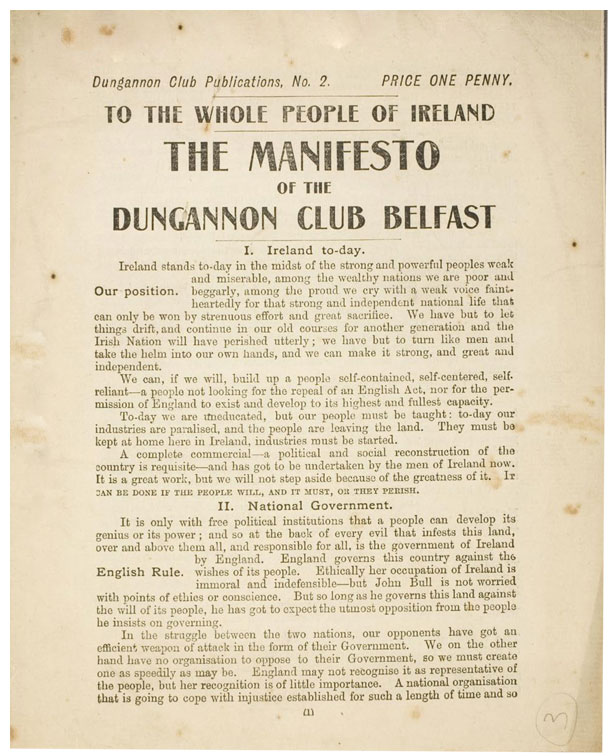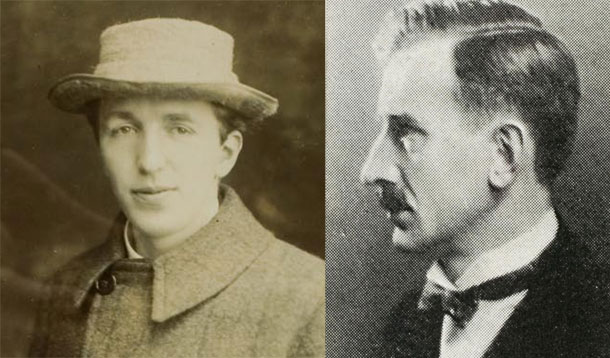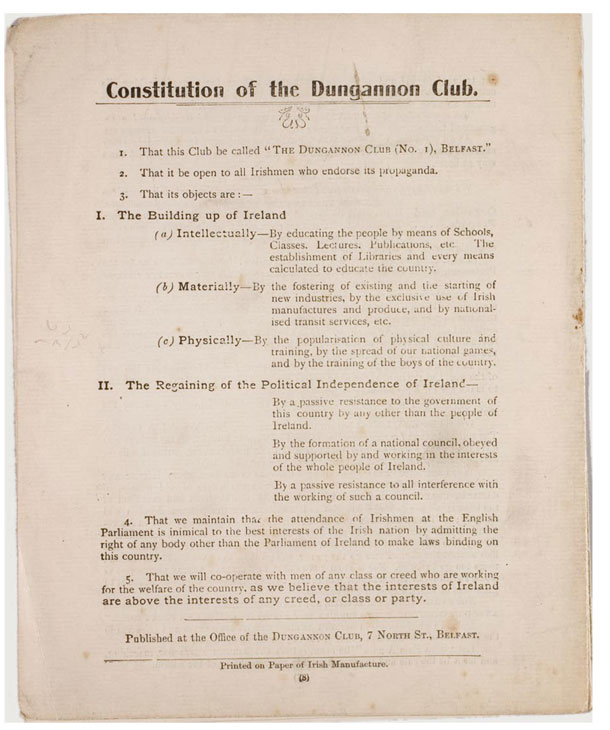8 March 2015
Dungannon Clubs – non-sectarian, republican and separatist

IN THE EARLY part of the century, one of the first republican organisations to emerge after years of obscurity by republican activists was the Dungannon Clubs.
Formed in Belfast in March 1905 by Bulmer Hobson and Denis McCullough, the Dungannon Clubs were in commemoration of the 1782 Volunteer Convention at Dungannon, County Tyrone.
Hobson, a 22-year-old native of Hollywood, County Down, then living in Belfast (who was to be a founder member with Constance Markievicz of Fianna Éireann) was a member of Cumann an nGaedheal, founded by Arthur Griffith in 1900.
McCullough, a Belfast republican who joined the Irish Republican Brotherhood (IRB) in 1901, was the same age as Hobson whom he recruited into that organisation in 1904.

● Hobson and McCullough
By 1905, Hobson (who had become dissatisfied with the slow progress being made by Cumann an nGaedheal) and McCullough (who had become disillusioned with the lack of activity of the IRB, its lack of discipline and its extreme traditionalism) founded the Dungannon Clubs.
The Dungannon Clubs, which were non-sectarian, republican and separatist in outlook, initially thrived mainly in Ulster but eventually spread throughout Ireland and to London. In a pamphlet by Hobson, To the Whole People of Ireland, The Manifesto of tile Dungannon Clubs, published in late 1905, the clubs were described by Hobson as "semi-literary, semi-political and patriotic".
Further pamphlets – urging the cultivation of the Irish language, opposition to recruiting for the British Army, economic independence and self-sufficiency for Ireland – were produced by the Executive during the following months.
In December 1906, Hobson founded a weekly paper, The Republic, to promote its aims, which, after six months and because of financial difficulties, merged with The Peasant in Dublin.
Within just six months of the founding of the Dungannon Clubs, the annual convention of Griffith's National Council, held
in November 1905, effectively launched the Sinn Féin movement.
Under the leadership of Griffith and Hobson, Sinn Féin, as an organisation, developed between 1905 and 1908, eventually absorbing the Dungannon Clubs, the National Council and Cumann na nGaedheal.
Following a visit to America at the invitation of John Devoy, the veteran Fenian, in 1907 to explain the Sinn Féin policy to Clan na Gael and IRB members, Hobson was instrumental in formally arranging the amalgamation of the Dungannon Clubs and Cumann an nGaedheal to form the Sinn Féin League in April of that year.
The Dungannon Clubs, the forerunner of the Sinn Féin organisation, was founded in Belfast on 8 March 1905, 110 years ago this week.

Follow us on Facebook
An Phoblacht on Twitter
Uncomfortable Conversations

An initiative for dialogue
for reconciliation
— — — — — — —
Contributions from key figures in the churches, academia and wider civic society as well as senior republican figures




